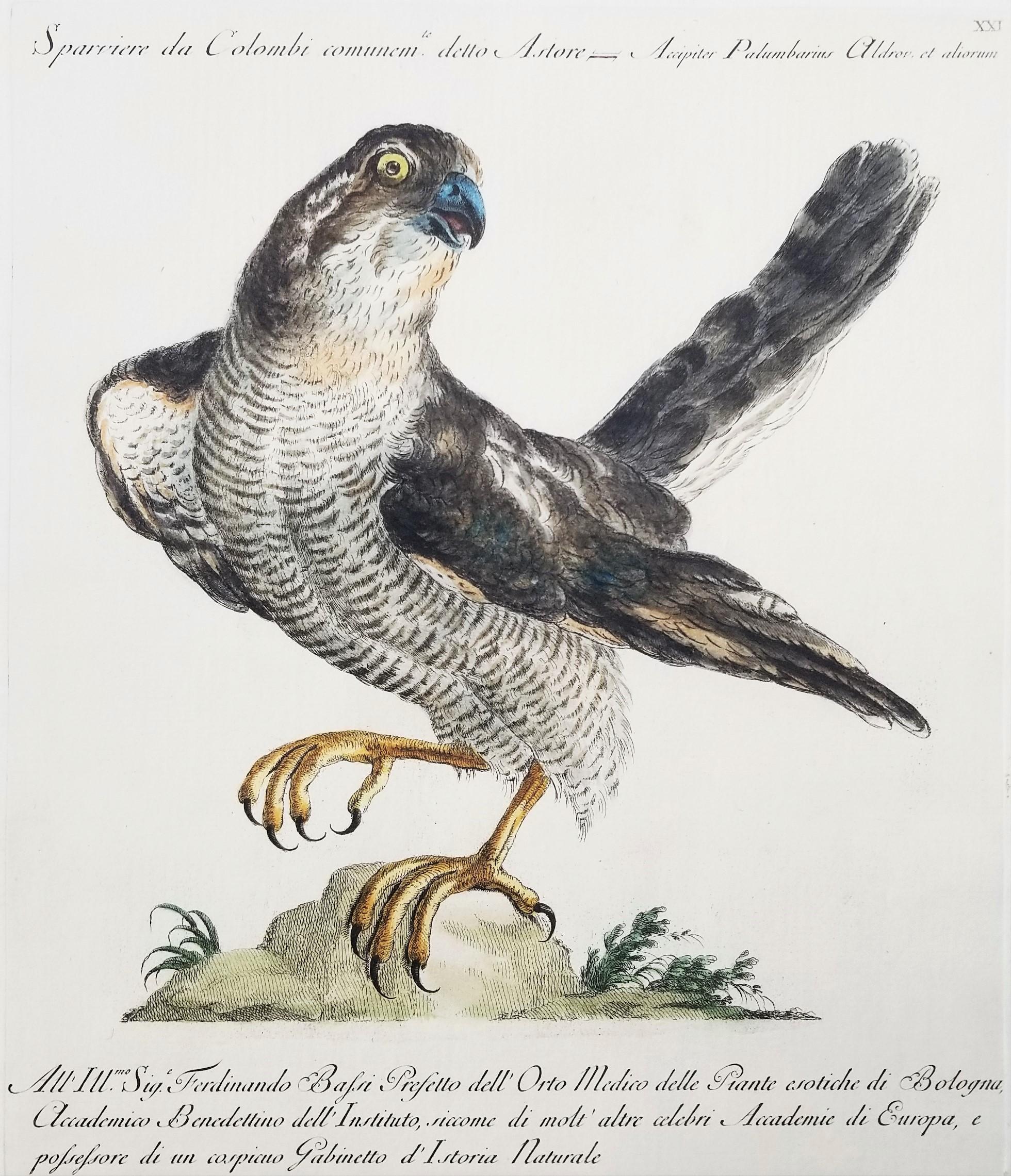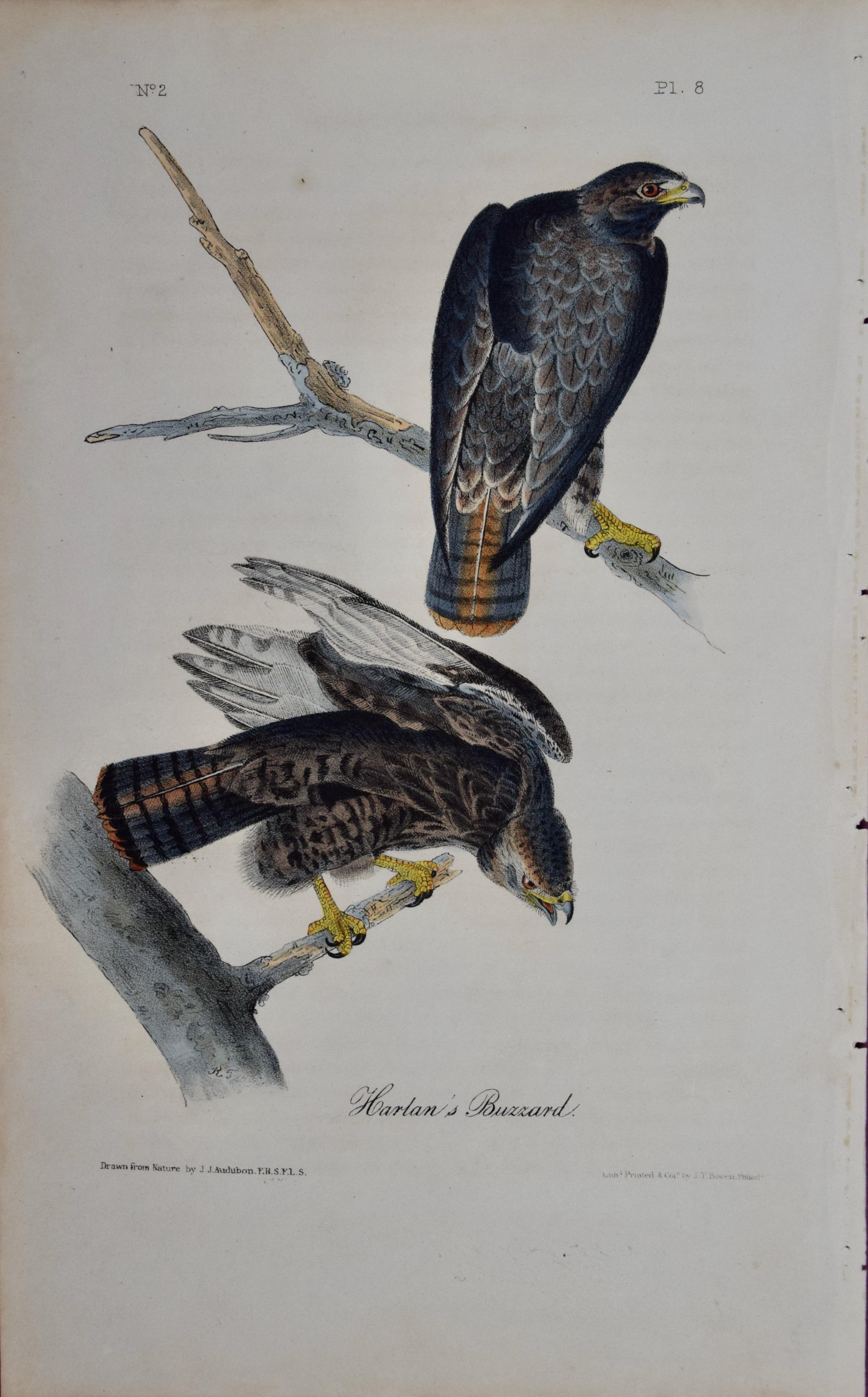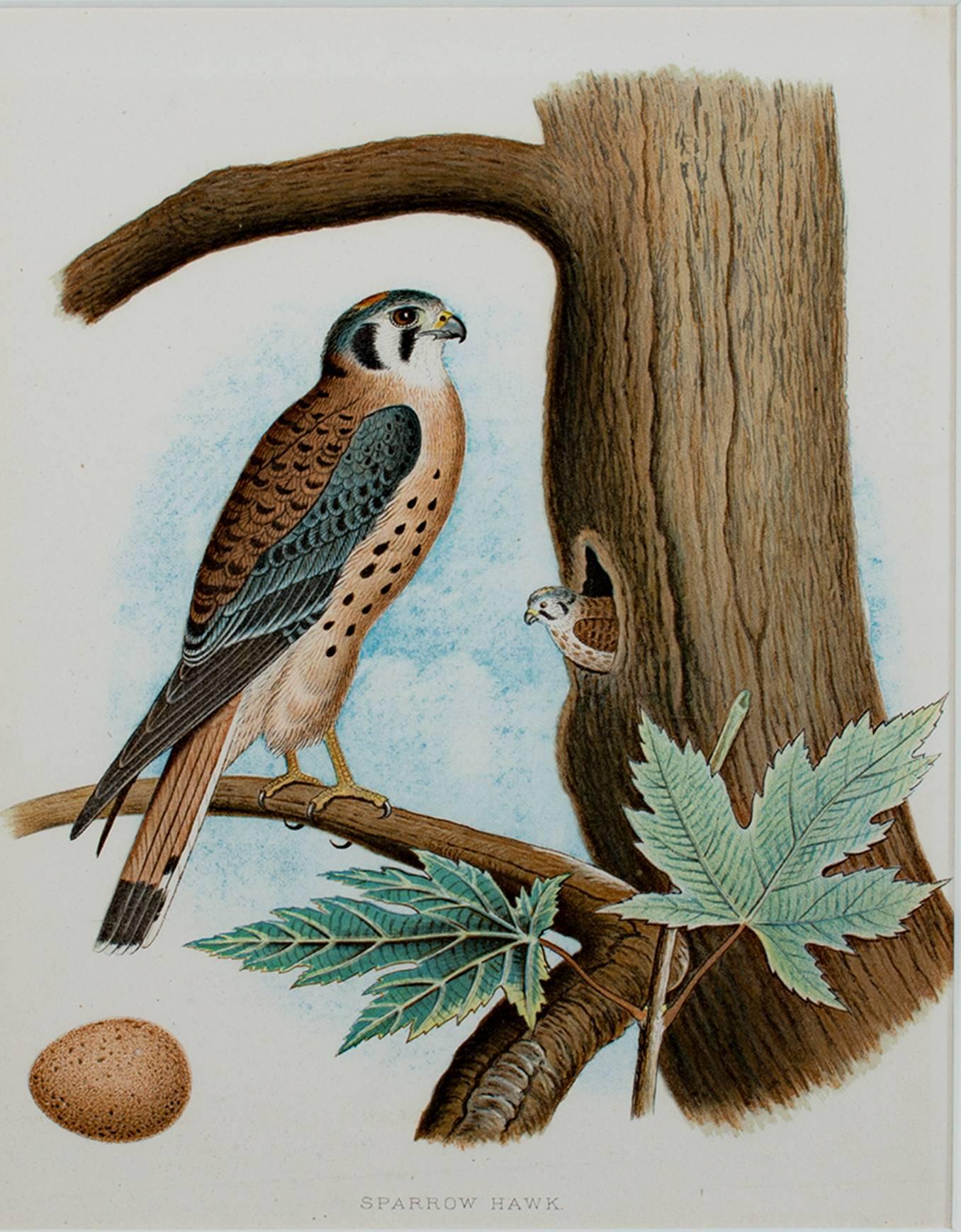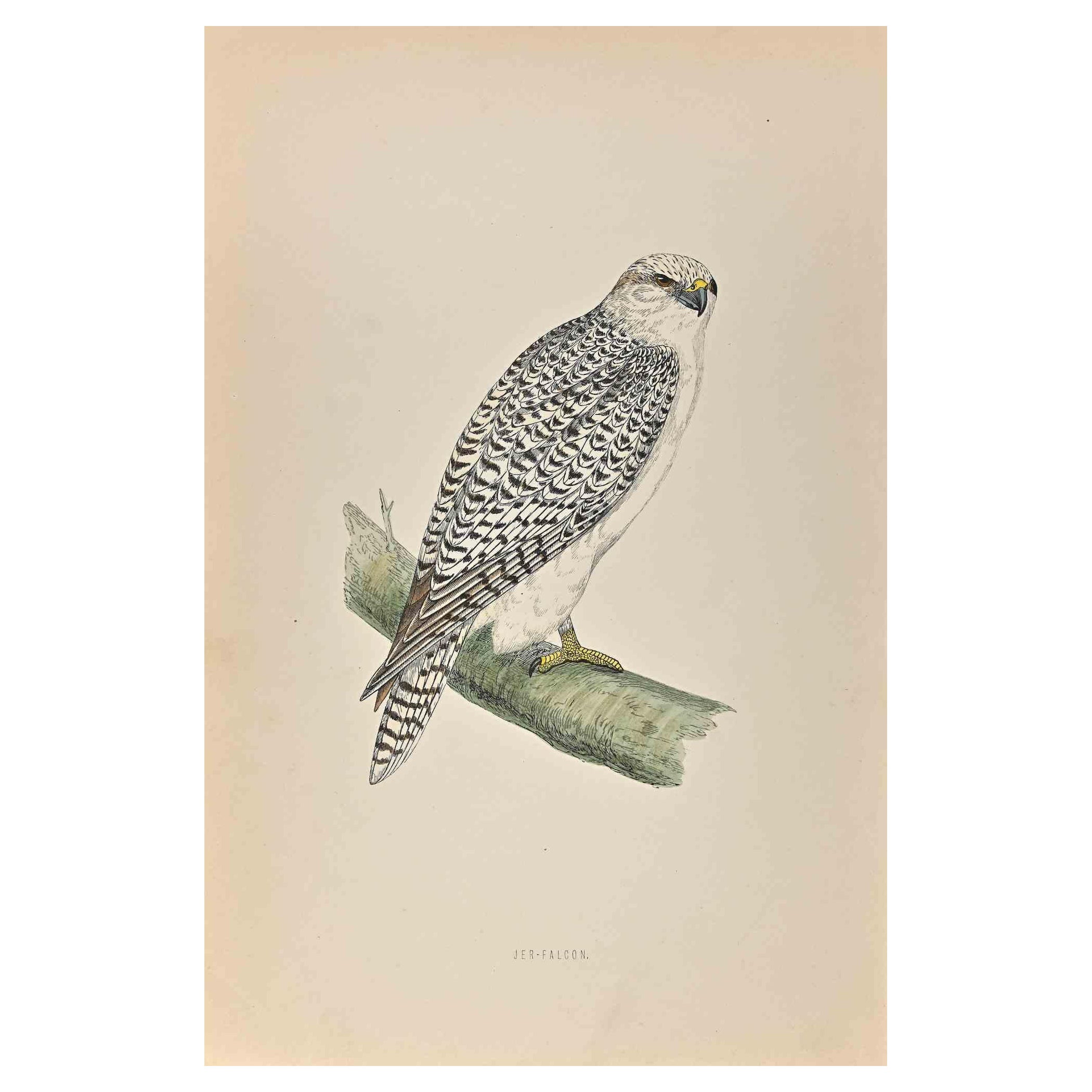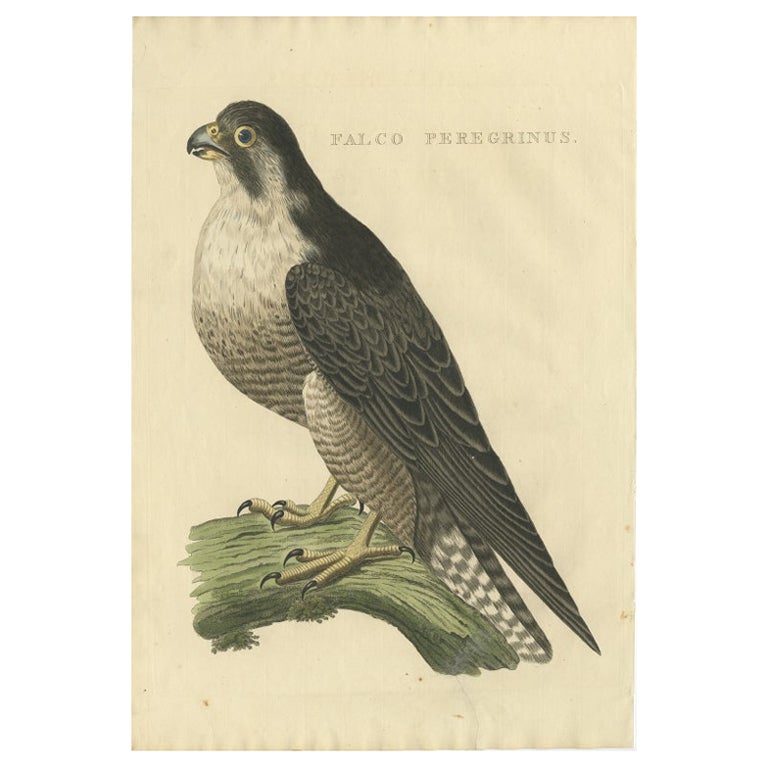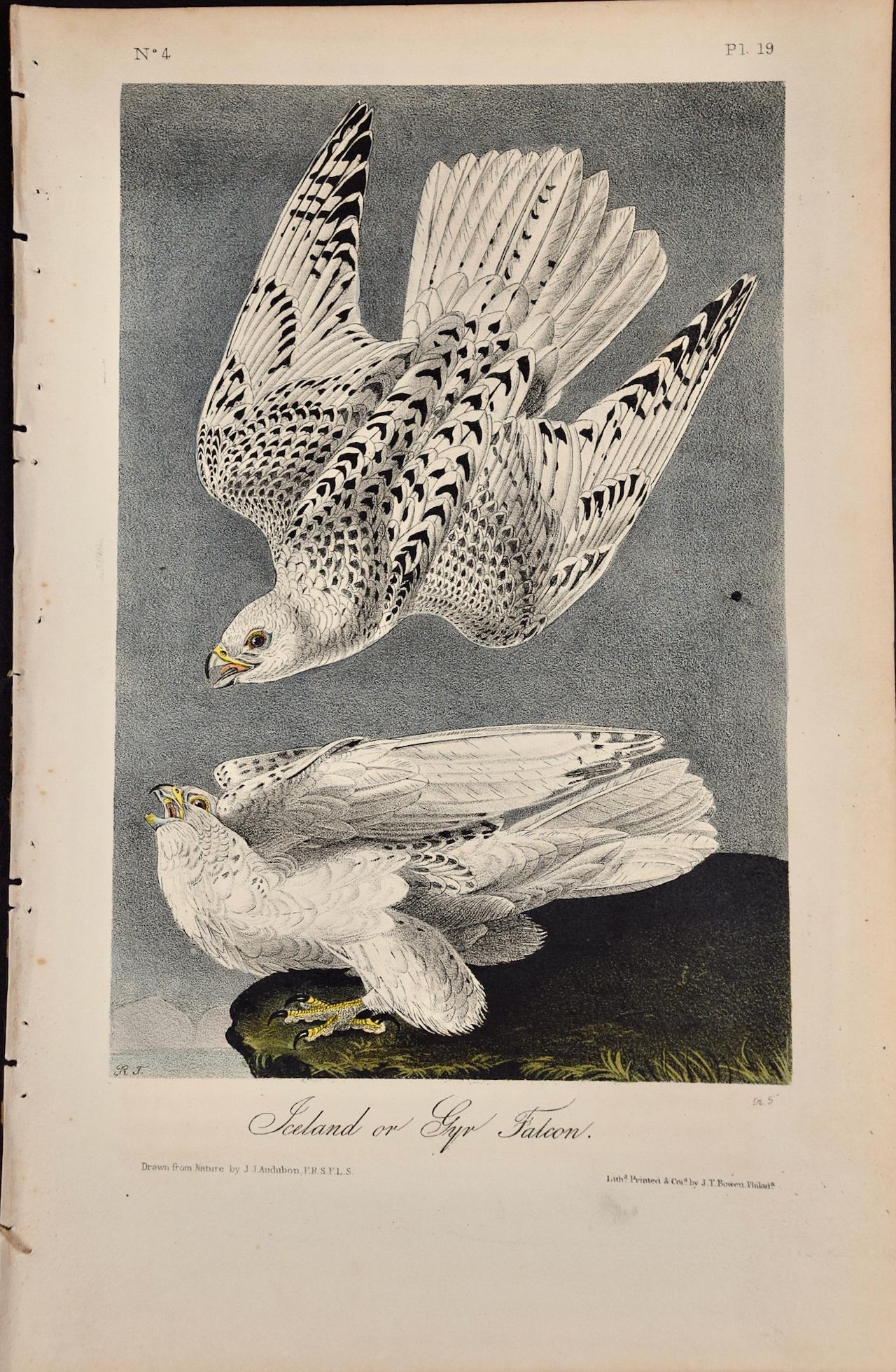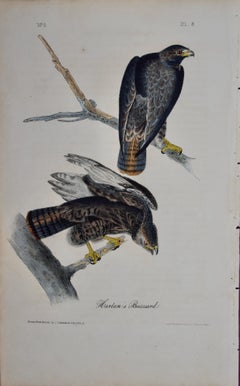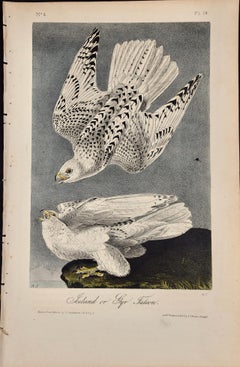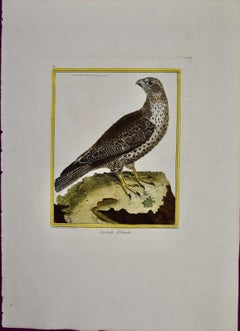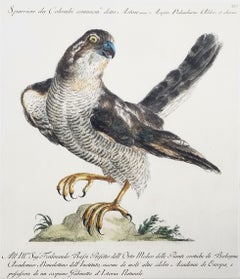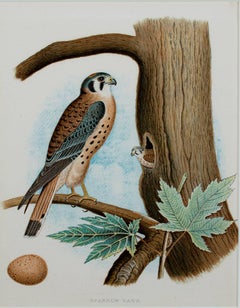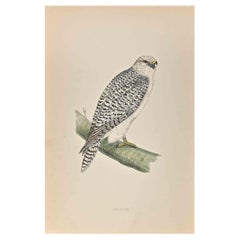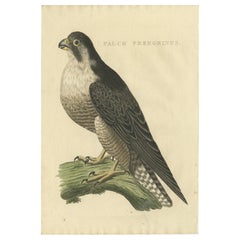Items Similar to "Alpomado Falcon" Hand Colored Bird Lithograph from USPRR Exploration & Survey
Want more images or videos?
Request additional images or videos from the seller
1 of 3
John Cassin"Alpomado Falcon" Hand Colored Bird Lithograph from USPRR Exploration & Survey1859
1859
$140
$17520% Off
£108.64
£135.8020% Off
€122.66
€153.3320% Off
CA$200.33
CA$250.4120% Off
A$218.59
A$273.2420% Off
CHF 113.09
CHF 141.3720% Off
MX$2,615.03
MX$3,268.7920% Off
NOK 1,428.64
NOK 1,785.8020% Off
SEK 1,341.47
SEK 1,676.8420% Off
DKK 916.05
DKK 1,145.0720% Off
About the Item
This striking hand colored stone lithograph of a "Alpomado Falcon" was created by John Cassin (1813-1869) and is Plate 1 in the "USPRR Exploration and Survey Report", published in Washington, DC in 1859.
There is an occasional spot, but the lithograph is otherwise in very good condition.
The 12 volume report was authorized and funded by the US government to determine the most practicable and economical route for a railroad from the Mississippi River to the Pacific Ocean. These explorations and subsequent reports represented the greatest collection of knowledge of the topography and natural history of the Western United States created during the nineteenth century.
John Cassin was an ornithologist and illustrator. He was named curator of the Philadelphia Academy of Natural Sciences in 1842 and worked with John Bowen, the lithographer for John James Audubon. After Bowen's death in 1856 he took over the lithography firm and published many of Audubon's books. His most famous works were Illustrations of the Birds of California, Texas, Oregon, British and Russian America (1853-56) and Birds of North America (1860).
- Creator:John Cassin (1813 - 1869)
- Creation Year:1859
- Dimensions:Height: 11.25 in (28.58 cm)Width: 8.25 in (20.96 cm)
- Medium:
- Movement & Style:
- Period:
- Condition:
- Gallery Location:Alamo, CA
- Reference Number:Seller: #7611stDibs: LU117325977102
About the Seller
5.0
Platinum Seller
Premium sellers with a 4.7+ rating and 24-hour response times
Established in 2011
1stDibs seller since 2019
294 sales on 1stDibs
Typical response time: 1 hour
- ShippingRetrieving quote...Shipping from: Alamo, CA
- Return Policy
More From This Seller
View AllHarlan's Buzzard Birds: An Original 19th C. Audubon Hand-colored Bird Lithograph
By John James Audubon
Located in Alamo, CA
This is an original 1st edition John James Audubon hand-colored lithograph entitled "Harlan's Buzzard", No. 2, Plate 8 from Audubon's "Birds of America, lithographed, printed and col...
Category
Late 19th Century Naturalistic Animal Prints
Materials
Lithograph
Iceland or Gyr Falcon: An Original 1st Ed. Audubon Hand-colored Bird Lithograph
By John James Audubon
Located in Alamo, CA
This is an original rare first edition John James Audubon hand-colored lithograph entitled "Iceland or Gyr Falcon", No. 4, Plate 19 from Audubon's "Birds of America, lithographed, pr...
Category
Mid-19th Century Naturalistic Animal Prints
Materials
Lithograph
An Icelandic GyrFalcon: An 18th Century Hand-colored Engraving by Martinet
By François Nicolas Martinet
Located in Alamo, CA
This is a hand-colored engraving of an Icelandic Ger Falcon entitled "Gerfault d''Islande" by Francois Nicolas Martinet, plate 210 from 'Histoire Naturelle des Oiseaux' in associatio...
Category
1760s Naturalistic Animal Prints
Materials
Engraving
"Washington Sea Eagle": An Original Audubon Hand-colored Lithograph
By After John James Audubon
Located in Alamo, CA
This is an original John James Audubon hand-colored royal octavo lithograph entitled "Washington Sea Eagle", No. 3, Plate 13, from Audubon's "Birds of America". It was lithographed, printed and colored by J. T. Bowen and published in Philadelphia between 1856-1871. It depicts an adult male sea eagle perched on a rock.
This is an excerpt from Audubon's own description of this magnificent eagle, which includes how he came up with the name "Washington Sea Eagle":
"The name which I have chosen for this new species of Eagle, “The Bird of Washington,” may, by some, be considered as preposterous and unfit; but as it is indisputably the noblest bird of its genus that has yet been discovered in the United States, I trust I shall be allowed to honour it with the name of one yet nobler, who was the saviour of his country, and whose name will ever be dear, to it. To those who may be curious to know my reasons, I can only say, that, as the new world gave me birth and liberty, the great man who ensured its independence is next to my heart. He had a nobility of mind, and a generosity of soul, such as are seldom possessed. He was brave, so is the Eagle; like it, too, he was the terror of his foes; and his fame, extending from pole to pole, resembles the majestic soarings of the mightiest of the feathered tribe...
Category
Mid-19th Century Naturalistic Animal Prints
Materials
Lithograph
Bird of Prey: An 18th Century Hand-colored Bird Engraving by Martinet
By François Nicolas Martinet
Located in Alamo, CA
This is a hand-colored engraving of a parrot bird entitled "La Bondree (Bird of Prey)" by Francois Nicolas Martinet, plate 420 from 'Histoire Naturelle des Oiseaux' in association wi...
Category
1760s Naturalistic Animal Prints
Materials
Engraving
Greenland Falcon "Falco Candicans": A 19th C. Hand-colored Lithograph by Gould
By John Gould and Henry Constantine Richter
Located in Alamo, CA
This is an original 19th century hand-colored folio-sized lithograph entitled "Falco Candicans" (Greenland Falcon Light) by John Gould, from his "Birds of Great Britain", published i...
Category
Mid-19th Century Naturalistic Animal Prints
Materials
Lithograph
You May Also Like
Sparrowhawk /// Antique Ornithology Bird Saverio Manetti Italian Watercolor Art
By Saverio Manetti
Located in Saint Augustine, FL
Artist: Saverio Manetti (Italian, 1723-1785)
Title: "Sparrowhawk" (Plate XXI - 21)
Portfolio: Storia Naturale Degli Uccelli (The Natural History of Birds)
Year: 1767-1776
Medium: Original Hand-Colored Engraving on watermarked laid paper
Limited edition: Unknown
Printer: Unknown
Publisher: heirs of Francesco Mouck (Vols. I-III), Gaetano Cambiagi (Vol. IV), Giuseppe Vanni (Vol. V), Florence, Italy
Reference: Ayer/Zimmer page 241; Fine Bird Books page 120; McGill/Wood, page 450; Nissen IVB No. 588
Sheet size: 17.88" x 14.07"
Platemark size: 13.69" x 11.69"
Condition: A few small minor areas of discoloration in margins. Has been professionally stored away for decades. In excellent condition with strong colors
Rare
Notes:
Engraved and hand-colored by Italian artists Lorenzo Lorenzi (Active: 1750-1780) and Violante Vanni (1732-1776). Latin and Italian texts by Saverio Manetti. Comes from Manetti's monumental five volume "Storia Naturale Degli Uccelli (The Natural History of Birds)", (1767-1776), which consists of 600 hand-colored engravings. Unidentified watermark in center of sheet.
The Eurasian sparrowhawk, also known as the northern sparrowhawk or simply the sparrowhawk, is a small bird of prey in the family Accipitridae. Adult male Eurasian sparrowhawks have bluish grey upperparts and orange-barred underparts; females and juveniles are brown above with brown barring below.
Manetti's extraordinary "Storia Naturale Degli Uccelli (The Natural History of Birds)", 1767-1776 was commissioned by Maria Luisa, the Grand Duchess of Tuscany. It is a massive 5 book volume set of 600 hand-colored engraved plates of birds. Engraved and hand-colored by Italian artists Lorenzo Lorenzi (Active: 1750-1780) and Violante Vanni (1732-1776). Latin and Italian texts by Manetti. Manetti created the drawings almost exclusively from real specimens, beginning with the extensive collection of Marquis Giovanni Gerini, an affluent Florentine Senator. Manetti saw the work was published in parts of 12 plates, issued every two months or so, most plates dedicated to a prominent member of the Italian nobility and gentry. Printed on handmade watermarked laid paper and published by heirs of Francesco Mouck (Vols. I-III), Gaetano Cambiagi (Vol. IV), Giuseppe Vanni (Vol. V), between 1767-1776 in Florence, Italy. It took 10 years to complete and at its time, was one of the largest surveys of ornithology attempted and the finest set of bird books to ever be created.
Biography:
Francesco Saverio Manetti...
Category
1760s Old Masters Animal Prints
Materials
Watercolor, Laid Paper, Engraving, Intaglio
19th century color lithograph scientific bird animal print hawk tree leaves egg
Located in Milwaukee, WI
"Sparrow Hawk" is an original color lithograph by an unknown American artist. It depicts a bird perching on the limb of a tree, its young poking out of th...
Category
1890s Academic Animal Prints
Materials
Lithograph
Jer-Falcon - Woodcut Print by Alexander Francis Lydon - 1870
Located in Roma, IT
Jer-Falcon is a modern artwork realized in 1870 by the British artist Alexander Francis Lydon (1836-1917) .
Woodcut print, hand colored, published by London, Bell & Sons, 1870. N...
Category
1870s Modern Figurative Prints
Materials
Woodcut
Antique Bird Print of The Peregrine Falcon by Sepp & Nozeman, 1829
Located in Langweer, NL
Antique print titled 'Falco Peregrinus'. This print depicts the Peregrine Falcon (Dutch: Slechtvalk).
The peregrine falcon (Falco peregrinus), also known as the peregrine, and hist...
Category
Antique 19th Century Prints
Materials
Paper
$1,472 Sale Price
20% Off
Free Shipping
Northern Goshawk – Astur gentilis – Original 1917 Lithograph in Matting Board
Located in Langweer, NL
Northern Goshawk – Astur gentilis – Original 1917 Lithograph from "Skandinaviens Fåglar"
Original antique bird print of the Northern Goshawk (Astur gentilis), identified in Swedish as Dufalk, ung fågel, ♂ (young male goshawk). This plate originates from the 1917 edition of Skandinaviens Fåglar (Birds of Scandinavia), published by Albert Bonniers Förlag in Stockholm. The work was one of the most beautifully illustrated ornithological publications of the early 20th century and features plates after illustrations by the famous wildlife artists William von Wright and Bruno Liljefors...
Category
Early 20th Century Swedish Prints
Materials
Paper
Antique Bird Print of the Eurasian Hobby Falcon by Von Wright '1929'
Located in Langweer, NL
The antique bird print titled 'Falco Subbuteo' is a historical depiction of the Eurasian hobby falcon. This print is sourced from 'Svenska Foglar Efter Naturen Och Pa Stenritade,' a work by Magnus von Wright.
**Key Features of the Print:**
1. **Ornithological Illustration**: The print is an ornithological illustration, showcasing the Eurasian hobby falcon (Falco subbuteo) in remarkable detail. It likely captures the bird's distinctive features, plumage, and anatomical characteristics.
2. **Scientific Accuracy**: Ornithological prints of this nature were created with a strong emphasis on scientific accuracy. The artist would have aimed to provide a true-to-life representation of the bird species.
3. **Natural History Context**: The print is part of 'Svenska Foglar Efter Naturen Och Pa Stenritade,' indicating its role in documenting and studying the natural history of birds, particularly those found in Sweden.
4. **Magnus von Wright**: Magnus von Wright, along with his brothers, was known for his contributions to ornithology through art. The von Wright brothers...
Category
Early 20th Century Prints
Materials
Paper
